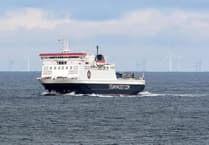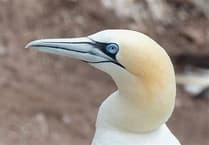This year could be significant for the evolution of wind power, both globally and locally.
This article from the experts at ESC (Energy & Sustainability Centre IOM) explains why we could be on the verge of a turning point in the shift away from fossil fuels, and why it’s so important for the Isle of Man to seize this once-in-a-generation opportunity to join the ‘second industrial revolution’.
In 2023, for the first time ever, wind turbines produced more electricity than gas in the UK.
In January this year the USA’s first large-scale offshore wind farm began generating power, a development which is being seen in the energy industry as a global milestone in the transition away from fossil fuels.
By the end of this year the Vineyward Wind 1 project is expected to have 62 turbines operational, generating up to 806 Megawatts for the electricity grid in the state of Massachusetts (enough to supply around 400,000 homes and businesses).
Here in the Island, 2024 has the potential for some important milestones too.
Most experts see wind power as having enormous potential to provide our electricity grid with secure and affordable energy (click here to read more about why the Isle of Man is an ideal location for wind energy).
This year the Manx Utilities Authority aims to progress with their renewable energy programme which has a target (set by Tynwald in the Climate Plan 2022–2027) for a 20 Megawatt onshore wind farm to be up and running by September 2026.
Ørsted, the leading global wind energy company, is also planning the next phase of its Mooir Vannin Offshore Wind Farm project with an expected generating capacity of 1.4 Gigawatts (equal to 1,400 Megawatts or 1.4 million kilowatts!).
This would be the first project in the island’s territorial seas and a site is proposed that’s located six to 12 nautical miles off the coast of Maughold.
The project schedule includes two key milestones for 2024 – the publication of a Community Engagement Consultation and Action Strategy which will be followed by community consultations.
The company has a target to submit a planning application in spring 2025 and is working towards an anticipated operational start date between 2030 and 2032.
These developments show that it’s an exciting time for the Isle of Man. Our climate is remarkably windy, turbine technology is highly efficient and the Island is ideally located to supply neighbouring countries in addition to our own needs.
We have a hugely valuable resource, sufficient to supply clean energy for generations to come. But to make that happen requires local support – and it’s important to remember that opportunities to progress wind power have been missed before. It is sobering to think that just some of the wind we have experienced this winter could have been providing all the warmth and light we need at home.
Using wind power to generate electricity began in the 1880s, and it’s by no means a new phenomenon here in the island.
In fact, the Isle of Man has its own chapter in the history of wind turbine development including experiments in the 1950s at South Barrule, described in this article as one of the most successful in that era.
Sadly, the potential demonstrated by the engineers and scientists involved was never pursued – and more than 70 years on an island that’s ideally suited to wind power is still waiting for its first wind farm to be built.
The green industrial revolution has already begun and the Isle of Man is late getting to the start line, not just in comparison to leading nations but also when compared to other island communities.
2024 could be either a year in which we start to catch-up by taking big steps on the path from fossil fuels and towards green energy. Let’s ensure that it is not another missed opportunity which we will only live to regret.
To find out more about ESC go to www.energysustainabilitycentre.im or follow the charity on Facebook, LinkedIn and Twitter.




